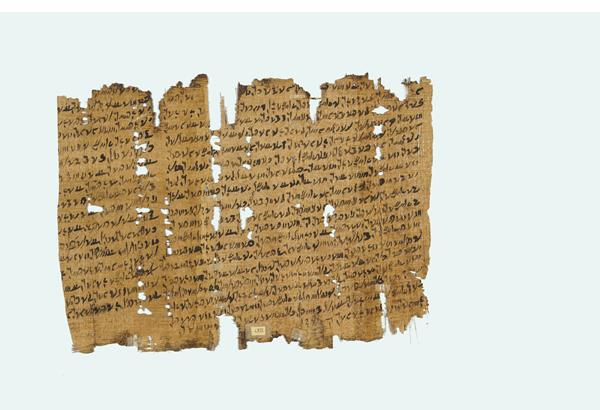
The name of the papyrus scroll is prosaic, but its contents are dynamite. Papyrus Amherst 63 contains a compilation of about 35 Aramaic literary texts from the seventh and sixth centuries B.C.E. Among them are three Israelite psalms, only one of which—Psalm 20—appears in the Hebrew Bible.
Although the other two never made it into the Bible, the three psalms clearly belong together: They were evidently composed originally in Hebrew; they celebrate Yaho (an alternate form of the name Yahweh) as king of the gods; and they are part of the liturgy of the New Year’s festival as celebrated by an Aramaic-speaking community.
The papyrus containing the three Israelite psalms was discovered in the late 19th century at Luxor (ancient Thebes), some 500 miles south of the Mediterranean coast. The scribes used Demotic—a cursive Egyptian script—to write down a collection of traditional Aramaic texts. The handwriting dates the manuscript to the fourth century B.C.E.

The Amherst papyrus was first acquired by a British politician and collector William Tyssen-Amherst (hence the name), whose family sold it to the Morgan Library in New York. From early on, the enigmatic-looking text attracted scholarly curiosity. Its script was clear enough, but the experts could not make heads or tails of its meaning. It took the collaboration of a Semitic language specialist and two Egyptologists to discover that the Demotic script of the papyrus had actually been used to write Aramaic!
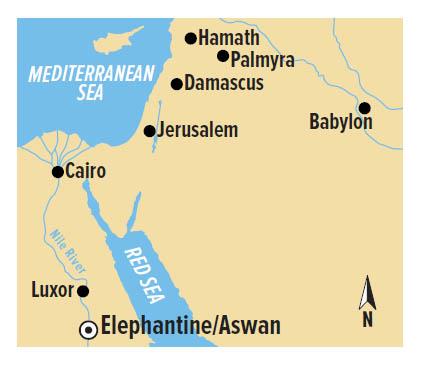
The first official breakthrough occurred in 1944, when the late Raymond Bowman of the University of Chicago translated a small litany of blessings by Syrian and Babylonian gods. It took almost 40 years before another passage of the papyrus was deciphered. In the early 1980s, scholars identified “a pagan version of Psalm 20” in the papyrus, which finally made “Amherst 63” a buzzword in Biblical studies.
The unusual combination of the Demotic script with the Aramaic language is one of the reasons why P. Amherst 63 had long been inaccessible in a reliable scholarly edition. In fact, the decipherment of the text has taken more than 120 years.1
So how did three Israelite texts end up in an Aramaic compilation written in a script derived from Egyptian hieroglyphs?
Between 525 and 404 B.C.E., Egypt was part of the Persian Empire. In order to secure their hold on Egypt, the Persians had garrisons throughout the land, from the Nile Delta in the north to the first Nile cataracts by Aswan in the south. Many of the Persian soldiers were mercenaries from abroad, which was an old Egyptian practice. The system was that of land-for-service: The soldiers received houses and land in return for their defense of the country, the protection of caravans, and sundry other chores.
By the fifth century B.C.E., there were various Jewish military colonies in Egypt. The most famous among them lived on Elephantine Island at the southern Egyptian border. The world has known about these Jews since the early 20th century owing to the papyri found there. The first discoveries of these Elephantine papyri were made by locals, who sold their finds to whomever was willing to pay. Not much later the archaeologists came and discovered many more papyri and inscribed potsherds (ostraca). These documents proved to be a rich source of information on the daily life of the Aramaic-speaking Jewish diaspora of the island.
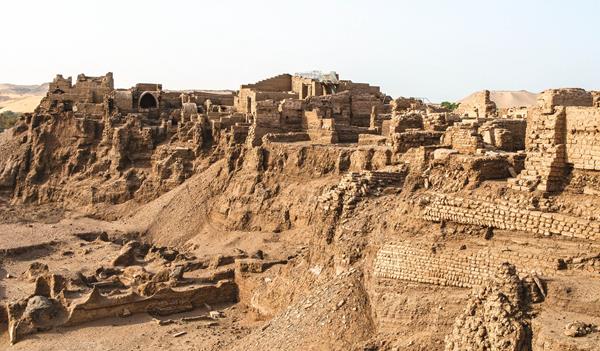
On the east bank of the Nile across from Elephantine lay ancient Syene—modern Aswan. This is where the Persian garrison commander had his headquarters. It is also the place where two other Aramaic-speaking mercenary communities were living. One was from Syria, specifically Hamath (modern Hama); the other came from Babylonia. The Elephantine Jews had a temple for their god Yaho (YHW) on the island. At Syene there were temples of the god Bethel and the Queen of Heaven (for the Syrian community), as well as of Nabu and Banit (for the Babylonian community). It is no coincidence that these five gods figure prominently in our P. Amherst 63.
The Amherst papyrus is composed of four sections and an appendix. The first three sections contain ritual texts from the Babylonians, the Syrians, and the Jews, respectively. These sections differ from one another by the gods on whom they focus: Nabu and Nanay in the first section, Bethel and his female consort in the second, and Yaho in the third section. The fourth section reflects a more pluralistic climate, as it puts the gods in different constellations, often equating one with the other, as though the three communities were seeking to elaborate a common religious language. Finally, the appendix contains a court novella about the Assyrian king Assurbanipal and his brother Shamash-Shumukin.
Given the correspondence between the archaeological evidence for gods worshiped by the mercenary communities at Syene and Elephantine, on the one hand, and the gods appearing in the Amherst papyrus, on the other, the compilation clearly goes back to the three Aramaic-speaking communities around Aswan. These communities had brought with them to Egypt their specific religious literature. At some point, the Jews, Syrians, and Babylonians must have decided to pool some of those texts into one collection. Why and when this took place is the big question. All we can tell is that the compilation of the Amherst papyrus is the result of a deliberate scribal effort to bring the literary legacy of the three communities together. There must have been an affinity of sorts—at least in the eyes of the scribes.
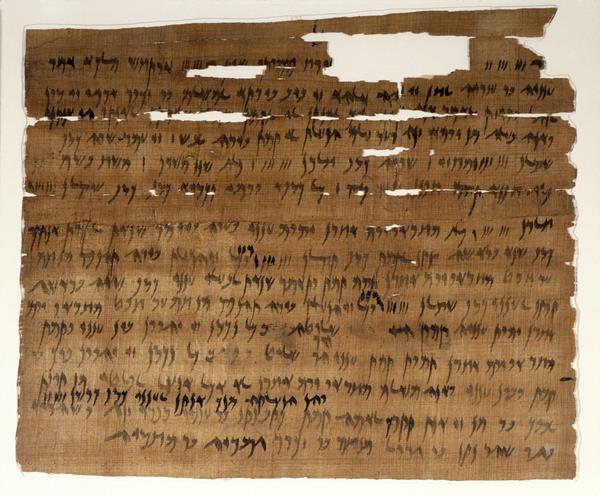
The first of the three Israelite psalms in P. Amherst 63 is a forerunner of Psalm 20. It is slightly shorter than the Biblical text and has no references to Zion, the Messiah (God’s “anointed one”), or the king. In the Biblical version, the song adopts a Judean perspective and focuses on the victory God will grant the king, “his Messiah.” In the psalm preserved by the Amherst papyrus, the perspective is Israelite (northern kingdom) rather than Judean (southern kingdom). The song is addressed to Yaho, the exact name the Elephantine Jews used to refer to their ancestral deity (Yahweh). This Yaho—alternately called by his epithet, Adonay (“Lord”)—is referred to as “our bull” and equated with the god Bethel.
The title “bull” points to the Israelite origin of the song. According to the Book of Kings, King Jeroboam had set up images of a golden calf, one at the site of Bethel and one at Dan. They represented Yahweh. “This is your god, O Israel, who brought you up from the land of Egypt!” (1 Kings 12:28). This bovine god would henceforth be the god of Israel—“the calf of Samaria” (Hosea 8:6)—embodying the “Yahweh of Samaria,” known from an inscription from the Negev (Kuntillet ‘Ajrud, c. 800 B.C.E.). (Samaria was the capital of the northern kingdom of Israel.) The identification of Yaho and Bethel could be taken as another indication of the song’s northern origins. The Book of Jeremiah speaks about the veneration of Bethel as an aberration of Israel, that is, the northern kingdom (Jeremiah 48:13).
The two other psalms of the Amherst papyrus are not in the Bible. That does not make them any less valuable from a historical and literary point of view. These were songs the Israelites chanted before their religion turned monotheistic.
They celebrate Yaho as the highest of the gods. His kingship, in fact, derives its full significance from the presence of other gods (cf. Psalm 82:1). The third Israelite psalm takes the stars of heaven as figurations of those gods, just as the mythological texts of Ugarit (c. 14th century B.C.E.) had done several centuries earlier. Being as numerous as sand, the entire “council of heaven” proclaims Yaho’s rule. A major god like Baal-Zaphon must accept he is no match. He can only bless Yaho as a way to congratulate him on his accession to the throne.

The atmosphere of these songs is festive throughout. The New Year’s festival, celebrated in autumn, is also a harvest festival. The second psalm invites Yaho to “drink from the bounty of a thousand bowls.” The “annual offerings” include fine lambs and sheep. It is a community banquet, during which both the Israelite god and his worshipers revel in a plentiful meal. If the Israelites have sometimes been pictured as the puritans of antiquity, these songs show a different side.
The first Israelite psalm equates Yaho and the Aramaic deity Bethel, about whom we knew little more than his name—until recently. The Syrian section of P. Amherst 63, however, contains a number of ritual songs to Bethel, allowing us to determine the profile of the god. The one thing that stands out is the similarity between Bethel and the Canaanite god Baal. In fact, the parallels are so close that Bethel comes across as the successor of Baal. Particularly striking is Bethel’s title “Destroyer of the Sea,” his rise to kingship over all the gods, and the references to the building of a heavenly palace, which are all familiar themes from the Ugaritic Cycle of Baal.
In more general terms, Bethel is a storm god, a mountain dweller, a builder of rainclouds, and a thunderer. At the same time, he is “the father of the orphan and the champion [literally, ‘judge’] of the widow”—phrases echoed in Psalm 68:6 (Psalm 68:5 in English), where they apply to the god of the Israelites. One of Bethel’s titles is “Resident of Hamath”—the very place the Syrian community at Syene had come from.
The god’s proper name is a bit unusual. Bethel’s name refers to the symbol that represented him: a stele that served as the god’s house. At some point, apparently, the name of the god’s symbol became the name of the god. If we assume that the bethel, which in Semitic languages literally means “house of God,” was originally thought of as the abode of Baal, this would explain why the god Bethel is the spitting image of Baal.
The identification of Yaho with Bethel in this psalm might seem surprising. But in their temple on Elephantine, the diaspora Jews of southern Egypt venerated the gods Eshem-Bethel and Anat-Bethel alongside their ancestral god Yaho. One of the Elephantine papyri refers to Anat-Bethel—the traditional consort of Bethel, better known under the title Queen of Heaven—with the name Anat-Yaho. Many scholars have inferred that, in the mind of the Elephantine Jews, Bethel and Yaho were two names for the same god, and since Bethel is the successor of Baal, Yaho was virtually identified with Baal.
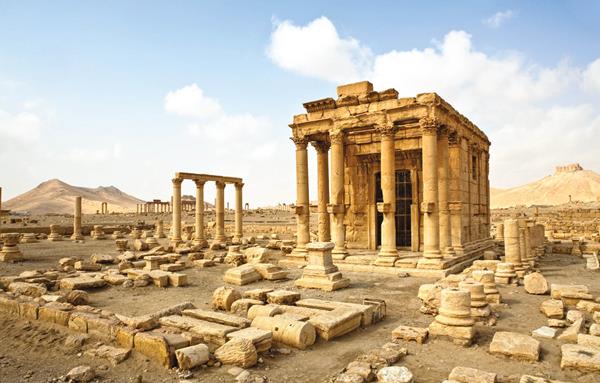
According to the Bible, the worship of Baal was a characteristic of the royally endorsed religious practice in the northern kingdom. One of the most famous stories of the Israelite prophets concerns the contest between Elijah and the prophets of Baal (1 Kings 18:20–46). The point of their confrontation was to determine which god would answer the animal sacrifice with fire: Baal or Yahweh. The encounter took place after three years of drought; everything alive was dying of thirst. Lightning would have been the harbinger of rain. In the end, Yahweh was the only god who answered with fire, and rainstorms soon followed. This story shows that the Israelites did not think of their god as the opposite of Baal but as a deity more perfect than Baal. Yahweh was the superior storm god.
The mostly implicit equation of Yaho and Bethel in the Amherst papyrus is the background against which the worship, by the Elephantine Jews, of various gods from Bethel’s entourage makes sense. Eshem-Bethel and Herem-Bethel were two of these gods, both mentioned in the Elephantine papyri. They, too, have long been merely names to us. The fourth section of the Amherst papyrus contains two prophecies by Eshem-Bethel and one love lyric, addressed to a goddess, spoken by Her-em-Bethel. These texts indicate that Eshem-Bethel was a manifestation of Bethel at night, whereas Herem-Bethel represented the god as a young lover.
It is difficult to spell out what these data imply for the religious universe of the diaspora Jews of southern Egypt. Undeniably, though, there was an Aramaean side to their religion, just as their cultural orientation was rather Aramaean—witness their language and the presence of a copy of the Aramaic Life and Sayings of Ahiqar among the debris of the Jewish quarter at Elephantine.
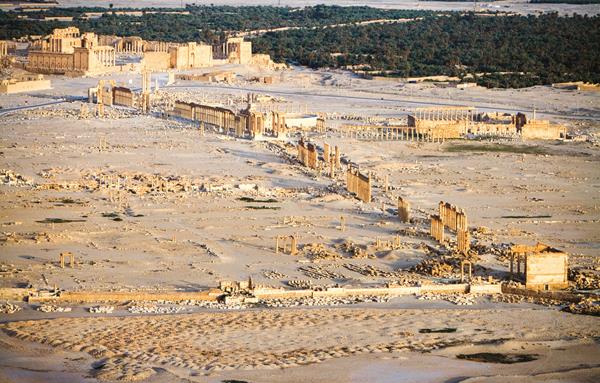
Interspersed among the ritual songs to Babylonian, Syrian, and Jewish gods in P. Amherst 63 are complaints and short historical narratives. Owing to these texts, the Amherst papyrus has more to offer than an introduction into the religious imagination of the Aramaic-speaking diaspora communities of southern Egypt. It also throws new light on their history. Both the Syrian and the Israelite sections of P. Amherst 63 open with a complaint over a city that has been turned into ruins. The genre is reminiscent of the Biblical Book of Lamentations. The complaint of the Syrian section is about the Assyrian conquest of Hamath in 720 B.C.E., due to which the Syrians have become “fugitives,” as the chorus of a cycle of songs to Bethel says, “May the troubles of the fugitives become bright again!” The description of a desolate city in the Israelite section, meanwhile, fits Samaria and presumably refers to its destruction in 721 B.C.E. But what happened to the Israelites of the northern kingdom?
A short historical narrative in the fourth section of the papyrus speaks about the shelter the Israelites eventually found. The text tells the story of a troop of “broken men” that reached the gate of a fortified city. They were “Samarians” and spoke a language that was incomprehensible to the citizens. The leader of this group was a man from Judah. He was taken to the king and told him that his “brothers”—his brothers in arms, that is—were from Samaria. The monarch bade them welcome saying they would find employment as soldiers in his city and promising them a happy future.
The constellation of Israelite soldiers with a Judean commander is intriguing. The most plausible explanation is to assume that these were people from the northern kingdom that had fled to Judah after the fall of Samaria. There is indeed archaeological evidence for a substantial increase of the population of Judah in the late eighth century B.C.E. Some of the Israelites who had fled found employment as mercenaries. Their stay in Judah was brief, though, since the Assyrian campaign against Judah involved a series of disastrous battles that eventually brought the army of Sennacherib to the gates of Jerusalem. A group of Israelite mercenaries led by a Judean had run away to save their skin. They ended up at a city that would give them shelter.
The fourth section of the Amherst papyrus does not give the name of this shelter city, but its descriptions are quite specific. The city is situated in, or on the edge of, the desert. It is a walled fortress located on a caravan route. This “fortress of palms” owes its existence to a perennial source. Its god is the “guardian of the perennial fountain,” the one “who makes the perennial fountain murmur.” With a little stretch of the imagination, it is possible the Nile might be considered a perennial fountain and this text might apply to Elephantine or Aswan. However, the text suggests the city is situated in Aram, where the most likely candidate one can think of would be the city of Palmyra. This identification may be confirmed by the references in the Amherst papyrus to deities known to have been worshiped at Palmyra, most prominently the local storm god Bol. Beside him there are Baal-Shamin, Nabu, Bel, Nanay, Herta, and Shalma—all of them known through later texts from Palmyra.
If this identification is indeed correct, the Amherst papyrus reveals an unknown chapter of the history of the Israelites. The forebears of the Jewish, Syrian, and Babylonian communities in Persian Egypt had lived in the city of Palmyra during much of the seventh century B.C.E. Their interaction did not begin in Egypt. They had been living side by side for generations before their migration to Egypt.
Most scholars put the beginnings of the Jewish community of Elephantine around 600 B.C.E., with a margin of error of 50 years at most. The historical background of the migration to Egypt was the military expansionism of the Babylonian Empire. This is also what the Book of Jeremiah implies (Jeremiah 40–44). At that time, people fled to Egypt from many places in the ancient Near East. It is likely that the Israelite, Syrian, and Babylonian communities all came to Egypt at the same time and found employment there as mercenaries. Syene and Elephantine would be their new home.
The fact that P. Amherst 63 comes from Egypt does not mean the text was composed in Egypt. In spite of the Egyptian script employed, the papyrus contains traditional Aramaic texts. Many of those texts date from the seventh century B.C.E. or even earlier. The three Israelite psalms, for instance, go back to Hebrew hymns that must have been written in the eighth century at the latest. The songs to Bethel must be ancient, too. Probably the youngest text of the compilation is the appendix: the Tale of Two Brothers, which describes the conflict between Assurbanipal in Assyria and his brother Shamash-Shumukin in Babylonia. The latter refused to be treated as a governor and claimed kingship. He paid for his rebellion with his life. Since this occurred in 648 B.C.E., and it probably took a few decades to transform a historic event into a court novella, the tale might date from the final decades of the seventh century B.C.E. But this was an appendix to the compilation, so the papyrus’s other sections may have been composed earlier in the seventh century.
There is one particular lead in the Amherst papyrus that hints to the time of its compilation: the celebration of the New Year’s festival and references to the New Moon, a religious banquet, and—in the Syrian section—the elevation of a new priestess as the human bride of the god.
We know that one of the main temples of Palmyra (the Bel temple) was inaugurated precisely during the New Year’s festival. Given the references to deities’ new dwellings in the Amherst papyrus and their ascension to the throne, it makes sense to think that the occasion behind the original compilation was the inauguration of a temple in Palmyra—the place where the three communities had found shelter. This could have happened at almost any point during the seventh century.
Although the compilation of songs, complaints, and narratives likely dates to the seventh century B.C.E., the surviving papyrus was produced during the fourth century B.C.E. How do we account for the time lag between the original compilation and its transcription in Demotic?
In the most plausible scenario, the Aramaic-speaking diaspora communities had brought the compilation with them at the time they migrated to southern Egypt, and their descendants, more than two centuries later, decided to produce a new copy of it. But why did they choose Demotic rather than the more obvious Aramaic writing system? Did the Egyptianized Arameans think Demotic had more prestige than Aramaic? Or had the Aramaic script become illegible to them? We might never know.
At any rate, the scribes had an overtly poor understanding of the text. They put word dividers where they should not be, thereby cutting words in the middle or, conversely, joining two words into one. But let’s not be too hard on them. If it had not been for their work, we would never have a reason to marvel at what truly is one of the most fascinating papyri from Egypt. It is one of the ironies of history that what may well be the richest source on the religion of the Aramean people has come down to us from Egypt.

